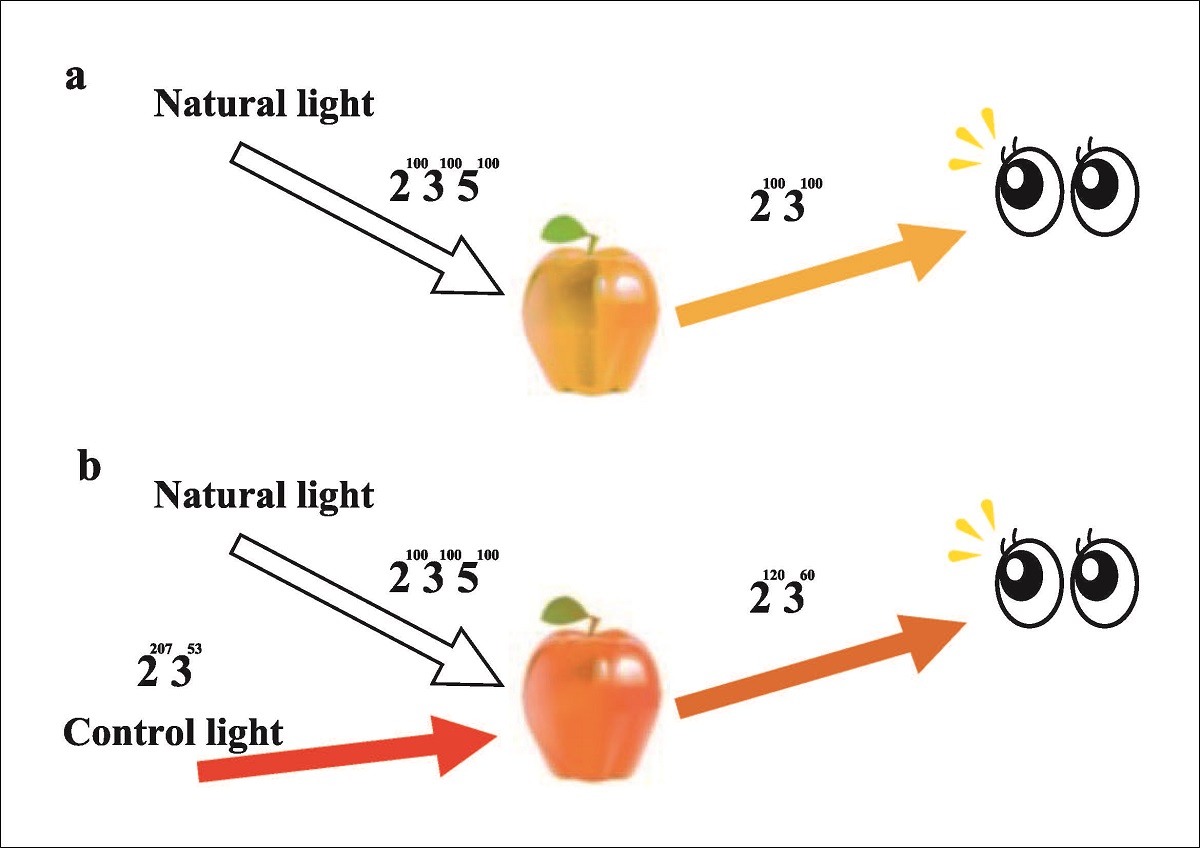CityU scholars unify colour systems using prime numbers
Existing colour systems, such as RGB and CYMK, are all text-based and require a large range of values to represent different colours, making them difficult to compute and time-consuming to convert. Recently, researchers from City University of Hong Kong (CityU) made a breakthrough by inventing an innovative colour system, called “C235”, based on prime numbers, enabling efficient encoding and effective colour compression. It can unify existing colour systems and has the potential to be applied in various applications, like designing an energy-saving LCD system and colourizing DNA codons.
Currently, the two most commonly used colour systems are RGB (Red, Green, Blue), a light-colour system that contains 3×256 values of letter symbols, and CMYK (Cyan, Magenta, Yellow, Key black), a pigment-colour system that contains 4×100 values of letter symbols. Other colour frames such as HSV (Hue, Saturation, Value) are derived from RGB and CMYK.
While these colour systems are widely adopted, they have many disadvantages. The letter-based colour codes make them difficult to explicitly express the relationship between colours and compute through mathematical operations, and ineffective in conversions among different colours. Also, each of the R, G and B, encoded as (r, g, b), in the RGB system has 256 values [0, 1, 2, …, 255], while each of the C, M, Y and K in the CMYK system has 100 values. It is difficult to distribute and allocate so many colours and hues on a colour wheel, and a large number of colour values may cause a huge computational burden for combining some of them to generate preferred colours.
To overcome these shortcomings and make a better colour system, a research team led by Professor Way Kuo, President and University Distinguished Professor at CityU, recently created a new and innovative colour framework, C235, based on the prime number theory and Goldbach's conjecture to encode colours and colourize objects.
“Our proposed C235 system offers a unified representation for the efficient encoding and effective manipulation of colour,” said President Kuo. “It opens the door to manipulating colour and light in a broad range of applications.”
The new C235 colour system uses the first three prime numbers, 2, 3 and 5, to represent the three basic colours, red, green and blue, respectively. By using multiplication operations, researchers derived individual codes for each colour lightness and thickness, allowing various colours to be superimposed and mixed.
In the C235 colour system, code <2> is for red, <3> is for green and <5> is for blue. Code <6> = <2X3> is for yellow (Y), code <15> = <3X5> is for cyan (C), code <18> = <3X6> is for yellow-green (YG), and code <45> = <3X15> is for cyan-green (CG). A colour in the C235 system is also associated with a grey level for its lightness/thickness. Since <30> = <2X3X5> represents a white light, the research team uses the powers of 30 (such as 301, 302, 303) to indicate the greyness levels. The general rule is that a higher power represents a darker or thicker colour.
The proposed C235 colour system has many advantages over existing colour systems. First, it is easier to digitalize, as all colours are represented by digital prime numbers. And because of the special property of prime numbers, each colour has only one code. Secondly, the C235 colour system can realize fast conversion between RGB and CMYK systems, and it can compress millions of colours to 1% with Goldbach's conjecture and put them on the same colour wheel, which requires much less storage space, facilitates fast access. Also, it is faster to compute, as various colours in the C235 colour system can overlap and be mixed easily.

The research team showed that the proposed C235 colour system has a lot of potential applications. For example, every pixel on a traditional LCD screen (used on TVs, monitors and mobile phones) needs a total of 24 pulses to drive the LEDs to emit red, green and blue light. But with C₂₃₅, the number of pulses needed is only a quarter of that needed for a conventional LCD, saving a lot of time and electricity.
The C235 colour system allows users to conveniently merge light and colour and facilitates the design of smart lighting systems, which can be widely used in fashion shows, painting exhibitions and commodity displays. Furthermore, the proposed C235 colour system can be readily adapted for colourizing DNA codons and any objects with multiple attributes.
The findings were published in the scientific journal Light: Science & Applications, under the title “Unifying colours by primes”.
President Kuo, also a Senior Fellow at the Hong Kong Institute for Advanced Study of CityU, is the corresponding author of the research. The first author is Professor Li Han-Lin, former professor in the Department of Management Science of CityU. Other collaborators include Professor Fang Shu-Cherng, from North Carolina State University, and Professor Bertrand M. T. Lin, from National Yang Ming Chiao Tung University.
This research received funding from the Hong Kong Institute for Advanced Study of CityU.
